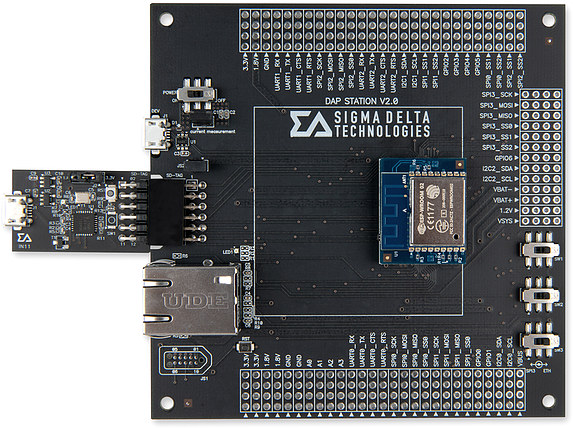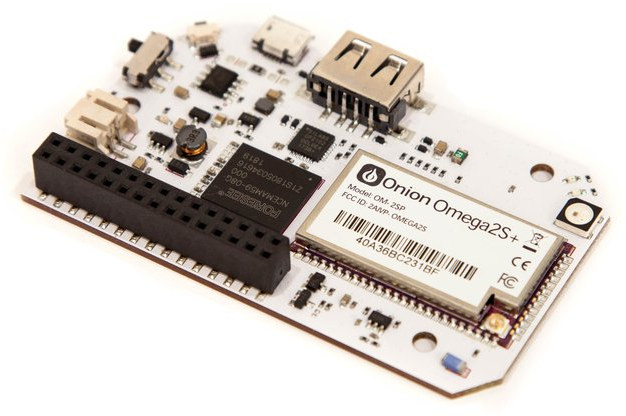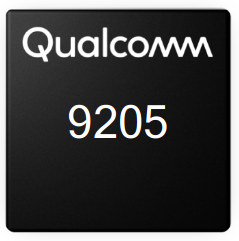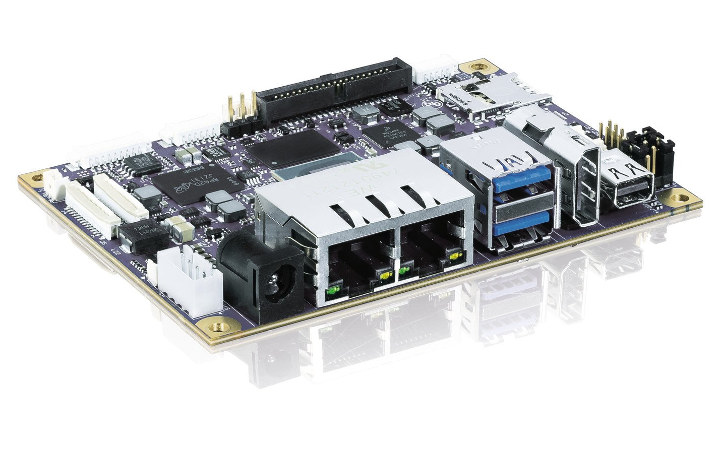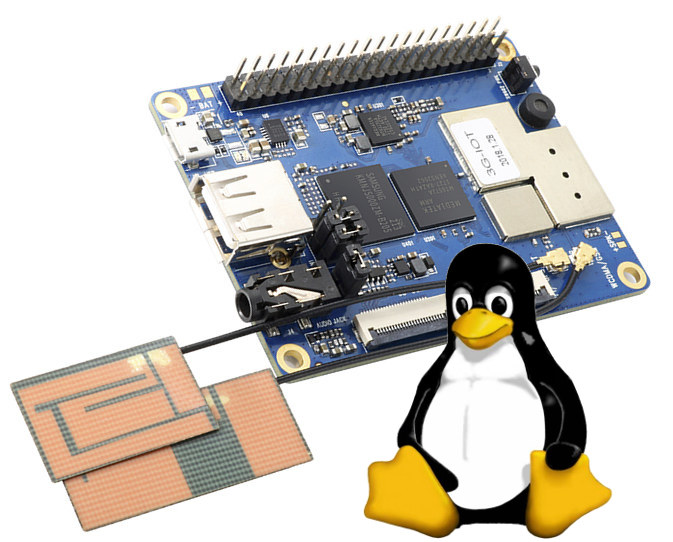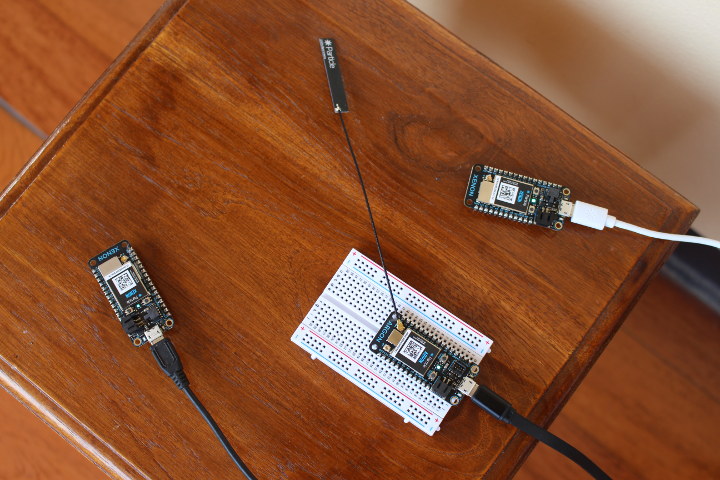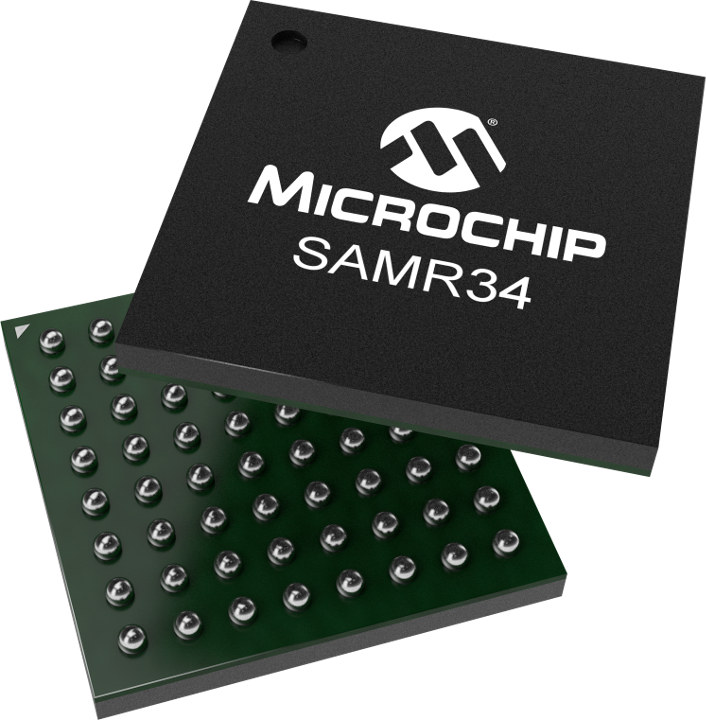South Korea based Sigma Delta Technologies’ SDTxArm Pelion Kit is a modular development kit comprised of a baseboard, as well as CPU and interface modules that is specifically designed to work with Arm Pelion cloud based device management service and Mbed OS for wearables and IoT applications. DAP (Debug Access Port) Station Ver.2 baseboard key features and specifications: USB – 1x micro USB 2.0 port Expansion I/Os via rows of through-holes 3x UART Interfaces 4x SPI Interfaces 3x I²C Interfaces 7x GPIO 4x analog inputs Debugging / Programming 1x TC2050 tag connection designed to allow programming without purchasing additional Interface if the user already has an appropriate Interface Module from other companies. I assume this is related to Tag Connect TC2050-IDC. 1x SD-TAG with JTAG/SWD signals Power Supply – 5V via micro USB port The DAP station takes an SDT Board (i.e. CPU board), as well as an interface board […]
Onion Omega2 Pro OpenWrt Linux IoT Board Comes with 8GB Storage (Crowdfunding)
Onion Omega2 and Omega2 Plus are MediaTek MT7688 MIPS based WiFi boards for IoT applications that were launched in 2016 for as low as $5. Both boards run OpenWrt (LEDE at the time), and Omega2 Plus included more memory and storage with respectively 128MB RAM, 32MB flash and a micro SD card. But Onion team found out that many users needed more storage space, and they’ve now come up with Omega2 Pro model with the same processor, 128MB RAM, and large 8GB flash considering we’re talking about a board running OpenWrt 18.06 here. Onion Omega2 Pro specifications: Wireless Module – Onion Omega2S+ with SoC – MediaTek MT7688 MIPS processor @ 580 MHz System Memory – 128MB DDR2 RAM Connectivity – 2.4 GHz 802.11 b/g/n Wi-Fi 4 Antenna – 2 dBi directional chip antenna (on mainboard) & u.FL connector for external antenna (on-module) Storage – 8 GB eMMC flash USB – […]
Qualcomm 9205 NB-IoT & Cat M1 LTE Modem Lowers Costs, Power Consumption
Qualcomm has introduced a new LTE IoT chipset with Qualcomm 9205 LTE modem that supports Cat M1 (eMTC), NB2 (NB-IoT), 2G/E-GPRS fallback, as well as GNSS. Qualcomm 9205 comes at a lower price, smaller footprint, and up to 70% lower power consumption in standby mode compared to its predecessor (MDM9206). Qualcomm 9205 LTE modem key features and specifications: Processor / OS – Arm Cortex A7 up to 800MHz with support for ThreadX and AliOS Things real-time operating systems Connectivity Standards 3GPP release 14 Category M1 and NB2; 2G/E-GPRS fallback where Cat M1 / NB2 is not available. Category M1 mode supports voice for applications such as monitored security panels, and mobility for applications such as asset trackers. RF transceiver Bandwidth support from 450 MHz to 2100 MHz Built-in RF front-end, a first in the cellular IoT space Geolocation Integrated GNSS (Global Navigation Satellite Systems) support for GPS, Beidou, Glonass, and […]
Kontron pITX-iMX8M Industrial Pico-ITX Motherboard is Powered by NXP i.MX8M Processor
We’ve had a fair amount of boards and modules based on NXP i.MX 8M dual or quad core Cortex A53 processor this year, including one pico-ITX motherboard with F&S Elektronik ArmStone MXM8 supporting up to 8GB RAM. Another i.MX 8M pico-ITX board will soon be launch courtesy of Kontron. pITX-iMX8M will also features the dual or quad core version of the processor, but will differ thanks to the presence of dual Gigabit Ethernet, mini DP and HDMI video outputs, an M.2 PCIe/USB 3.0 socket, and built-in TPM 2.0 security. Kontron pITX-iMX8M preliminary specifications: SoC – NXP i.MX 8M Dual or QuadLite Arm Cortex A53 processor @ up to 1.5 GHz, Arm Cortex-M4 real-time core, and Vivante GC7000Lite GPU with support for OpenGL/Es 3.1, OpenGL 3.0, Vulkan System Memory – 4GB LPDDR4 Storage – 64GB eMMC 5.1 flash, micro SD card / SIM slot combo Video Output – mini DisplayPort, HDMI […]
Orange Pi 3G-IoT Board Finally Gets a Linux Image
Shenzhen Xunlong has launched several cellular IoT boards over the last few years with Orange Pi 2G-IoT, Orange Pi 3G-IoT and Orange Pi 4G-IoT, but each time, they are launched with Android support only. Linux support on the 2G board has never been great, while the Android 8.1 SDK for Orange Pi 4G-IoT was released earlier this year, but no Linux image are available. This leaves us with Orange Pi 3G-IoT board that just got its first Linux based firmware images released today on both Baidu and Google Drive cloud storage storage services. Four images are available for Orange Pi 3G-IoT-A (256MB DDR2) and Orange Pi 3G-IoT-B (512MB DDR2) boards with images booting from eMMC flash or micro SD card. A shell script (tar_image.sh) is provided to flash the image to the micro SD card since the latter for follow a specific partition layout. Sadly, there’s no mention of the […]
Particle Mesh Networking Review – Part 2: Getting Started Guide with Argon & Xenon
I’ve recently received a Particle Mesh IoT Development Kit with one Argon WiFi + Mesh (802.15.4) board acting as gateway, three Xenon Mesh boards, and various sensors and accessories. I’ve already showcased the hardware in the first part in the review, so in this post I’ll post my experience getting started with Particle Mesh networking using the kit. Beside the kit, you’ll need a few micro USB cables, a mobile phone running Android or iOS, a reliable Internet connection (more on that later), and a host PC for programming and debugging potential issues. Setting Up Particle Argon & Xenon boards First we’ll need to configure / setup the boards. Go to https://setup.particle.io to login or create an account if you don’t already have one, and you should be brought the following page. Select Mesh, and you’ll be asked to setup a gateway first. Any of the boards from Particle Mesh […]
Wistrio LoRa Tracker RK5205 Complies with 96Boards IoT Edition Specification
It’s not hard to find a LoRa GPS tracker board such as Rak Wireless RAK811 these days, but if for some reasons, you’d also like your board to comply with 96Boards IoT Edition form factor, Rak Wireless just launched Wistrio LoRa Tracker RK5205 for $49.50 plus shipping on Aliexpress and Amazon. Wistrio specifications: LoRa Module – RAK5205 module with SX1276 LoRa chipset, STM32L1 Arm Cortex-M3 microcontroller LoRa Connectivity LoRaWAN 1.0.2 protocol OTAA/ABP activation Programmable bitrate up to 300 Kbps Support for global bands: EU433, CN470, EU868, US915, AS923, AU915, KR920, and IN865 SMA & iPEX antenna options Location – Quectel L76-L GNNS chip supporting GPS, GLONASS, Galileo and QZSS system (pin-to-pin compatible with u-blox Max7) Sensors – LIS3DH 3-axis accelerometer, BME680 environmental sensor reporting gas, pressure, humidity and temperature data Expansion Header – I2C, GPIOs, UART and ADC Power Supply – Rechargeable battery via micro USB port, or 5V […]
Microchip Releases Tiny SAM R34/R35 LoRa SiPs and Development Kit
Microchip has been offering RN2483 & RN2903 LoRa modules for respectively 868 MHz and 915 MHz frequencies for several years, but the company has now announced SAM R34 and SAM R35 LoRa systems-in-package (SiP) that offer similar functionality in a much smaller form factor. Both SiPs integrate a Microchip SAM L21 Arm Cortex-M0+ based MCU,a sub-GHz RF LoRa transceiver operating from 862 to 1020 MHz, and a software stack. That means you don’t need different SiP depending on the region, and the only difference between SAM R34 and SAM R35 is the latter does without a USB interface for lower cost. Microchip SAM R34/R35 key features and specifications: MCU – Arm Cortex M0+ MCU @ 48 MHz System Memory – Up to 40 KB RAM including 8KB LP-RAM Storage – Up to 256 KB Flash for application code and stack Wireless Connectivity 862 MHz to 1020 MHz coverage Up to 20 […]


